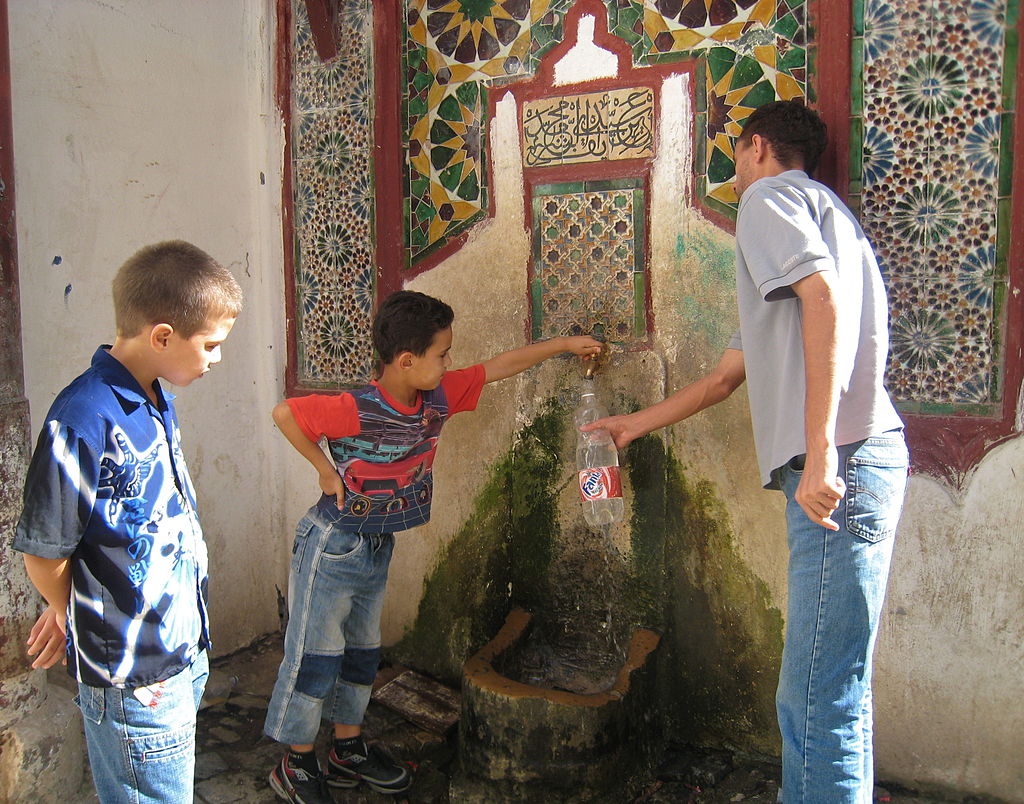10 Facts about Sanitation in Algeria
 Algeria is a former French colony in North Africa. Libya, Tunisia Niger are on its western borders. Morocco, Marius and Mali are on its eastern borders. About half of the population lives in urban areas concentrated near the Mediterranean sea. Algeria is a member of OPEC and the Arab Maghreb Union, a regional organization. During the 1990s, the country experienced a civil war between Islamist terrorist groups and the Algerian army. While the army’s victory ensured greater stability, Algeria continues to face challenges such as sanitation. Here are ten facts about sanitation in Algeria.
Algeria is a former French colony in North Africa. Libya, Tunisia Niger are on its western borders. Morocco, Marius and Mali are on its eastern borders. About half of the population lives in urban areas concentrated near the Mediterranean sea. Algeria is a member of OPEC and the Arab Maghreb Union, a regional organization. During the 1990s, the country experienced a civil war between Islamist terrorist groups and the Algerian army. While the army’s victory ensured greater stability, Algeria continues to face challenges such as sanitation. Here are ten facts about sanitation in Algeria.
10 Facts about Sanitation in Algeria
- Diseases: Poor sanitary conditions place Algerians at-risk for diseases. In 2018, Algeria experienced a cholera outbreak with 217 cases. The cases were concentrated in Algiers, the capital. Government responses included testing the water supply daily for pathogens and requesting 5,000 diagnostic tests from the WHO. By way of comparison, cholera has been virtually eradicated in the United States with most cases in the U.S. originating from international travel.
-
Rural-Urban Divide: Urban Algerians are more likely to have greater access to sanitation than rural Algerians. Three percent more rural Algerians do not have access to basic sanitation (i.e sewers, latrines and septic tanks) than urban Algerians. This rural-urban divide continues when comparing lower classes. Algeria’s urban poor experience 10% more sanitation coverage than their rural counterparts. To help address the challenges associated with rural sanitation, the African Development Bank established the Rural Water Supply and Sanitation Initiative in 2003.
-
Hand Washing: While the majority of Algerians are able to practice proper hygiene by washing their hands, disparities exist among rural and urban communities. Currently, 83% of Algerians are able to wash their hands. This is slightly higher than what is typical in the region. However, there is a 14% gap between rural and urban Algerians; only 73% of rural Algerians are able to do so.
-
Recent Improvements: Over the last decade, rural Algerians have gained greater basic sanitation. From 2000 to 2017, basic sanitation coverage increased by approximately 10%. Today about 70% of Algerians have access to basic sanitation. This is relatively high for the region as an average of only 50.2% of individuals have this service region-wide.
-
Access to Toilets: Similarly, the number of rural Algerians openly defecating has substantially decreased. From 2000 to 2017, this percentage decreased by 12.5%. Today only about 3% of Algerians experience this level of deprivation. This is substantially lower than the regional percentage of 10% of rural individuals.
-
Rural Sewers: Disadvantaged Algerians have increased access to better sanitary facilities. Since 2000, approximately 14% more poor Algerians gained access to sewers. Notably, this positive trend is true of rural Algerians. Since 2000, 17% more rural Algerians gained access to sewers. Today about 60% of this demographic has sewers.
-
Regional Access to Sanitation: As a whole, more Algerians have better sanitation facilities. In the last decade, sewer availability has increased by about 14%. Today, about 83% of all Algerians use sewers. This percentage is higher than the regional percent of 58%.
-
Drinking Water: In 2000, few Algerians had access to quality drinking water facilities. The majority of Algerians gain drinking water from pipe-improved water. Notably, this is true for both rural and urban Algerians. To address this issue, the Algerian government established L’Algérienne Des Eaux (ADE), a public company, in 2001. To further remedy this problem, the Algerian government established a program to create more extensive water pipelines to Médéa, a city in Northern Algeria.
-
Students: Most Algerian students have access to basic sanitation and safe drinking water. Currently, 98% of Algeria’s primary students have basic sanitation; 87% have safe drinking water. This is a remarkable achievement as regionally only about 8o% of all students have basic sanitation and 74% have safe drinking water.
-
Drinking Water Improvements: Most Algerians have access to safe drinking water. 93% of Algerians have basic access to drinking water. This is true of both urban and rural areas with only a 7% gap between the two categories.
These ten facts about sanitation in Algeria reveal that Algeria has overcome substantial challenges. While most Algerians have access to some level of sanitation, drinking water and hygiene, there remains a higher risk for waste-related illnesses such as cholera. Furthermore, while there remains a persistent gap between its rural and urban citizens, the country’s overall coverage and sanitary facilities have improved since 2000. With sustained effort by the Algerian government and the African Development Bank, Algeria can overcome the remaining obstacles to better public health.
– Kaihua Tymon Zhou
Photo: Wikimedia
